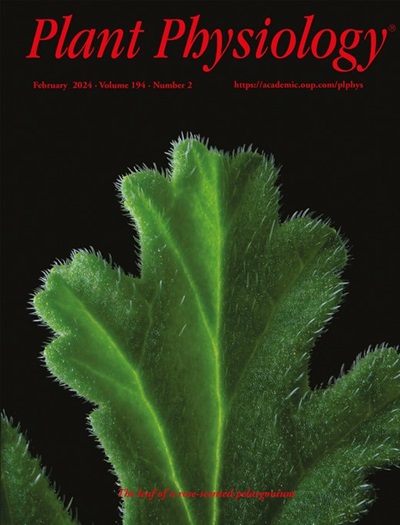The SAGA histone acetyltransferase complex functions in concert with RNA processing machinery to regulate wheat wax biosynthesis
IF 6.5
1区 生物学
Q1 PLANT SCIENCES
引用次数: 0
Abstract
Wax mixtures comprising very long-chain fatty acids and their derivatives represent the major cuticular components and protect plant tissues from environmental stresses. Uncovering the regulatory mechanisms underlying wax biosynthesis is essential for the genetic improvement of the agronomically important crop bread wheat (Triticum aestivum L.). Herein, partially redundant ECERIFERUM 3 (TaCER3) proteins were characterized as essential components of wheat wax biosynthetic machinery. Furthermore, we demonstrated that the wheat Enoyl-CoA Reductase promoter-binding MYB transcription factor 1 (TaEPBM1)could directly target TaCER3 genes and recruit components of the SAGA histone acetyltransferase complex to mediate histone acetylation, thereby stimulating TaCER3 transcription and potentiating wax biosynthesis. Wheat RNA processing machineries, including the RNA exosome, SUPERKILLER (SKI) complex, cap-binding complex (CBC) components, TaSERRATE and its partners, as well as elongator subunits, affected the accumulation of TaCER3 transcripts and controlled wax biosynthesis. Silencing of wheat CBC components, TaSERRATE, and elongator subunits resulted in the accumulation of TaCER3 transcripts and increased wax biosynthesis. Importantly, the activation of wheat wax biosynthesis in the absence of RNA processing factors was suppressed by silencing TaCER3 expression. These findings suggest that the SAGA histone acetyltransferase complex functions in concert with the RNA processing machinery to regulate wheat wax biosynthesis, probably via affecting TaCER3 genes.SAGA组蛋白乙酰转移酶复合物与RNA加工机制协同作用,调节小麦蜡的生物合成
含有超长链脂肪酸及其衍生物的蜡混合物代表了主要的角质层成分,并保护植物组织免受环境胁迫。揭示蜡质生物合成的调控机制对小麦的遗传改良具有重要意义。在这里,部分冗余的ECERIFERUM 3 (TaCER3)蛋白被表征为小麦蜡生物合成机制的重要组成部分。此外,我们证明小麦烯酰辅酶a还原酶启动子结合MYB转录因子1 (TaEPBM1)可以直接靶向TaCER3基因,招募SAGA组蛋白乙酰转移酶复合物的组分介导组蛋白乙酰化,从而刺激TaCER3转录,增强蜡的生物合成。小麦RNA加工机制,包括RNA外显体、SUPERKILLER (SKI)复合物、cap-binding复合物(CBC)组分、TaSERRATE及其伙伴,以及伸长亚基,影响TaCER3转录本的积累和控制蜡的生物合成。小麦CBC组分、TaSERRATE和伸长亚基的沉默导致TaCER3转录物的积累和蜡的生物合成增加。重要的是,在没有RNA加工因子的情况下,通过沉默TaCER3的表达抑制了小麦蜡生物合成的激活。这些发现表明,SAGA组蛋白乙酰转移酶复合物与RNA加工机制协同作用,可能通过影响TaCER3基因来调节小麦蜡的生物合成。
本文章由计算机程序翻译,如有差异,请以英文原文为准。
求助全文
约1分钟内获得全文
求助全文
来源期刊

Plant Physiology
生物-植物科学
CiteScore
12.20
自引率
5.40%
发文量
535
审稿时长
2.3 months
期刊介绍:
Plant Physiology® is a distinguished and highly respected journal with a rich history dating back to its establishment in 1926. It stands as a leading international publication in the field of plant biology, covering a comprehensive range of topics from the molecular and structural aspects of plant life to systems biology and ecophysiology. Recognized as the most highly cited journal in plant sciences, Plant Physiology® is a testament to its commitment to excellence and the dissemination of groundbreaking research.
As the official publication of the American Society of Plant Biologists, Plant Physiology® upholds rigorous peer-review standards, ensuring that the scientific community receives the highest quality research. The journal releases 12 issues annually, providing a steady stream of new findings and insights to its readership.
 求助内容:
求助内容: 应助结果提醒方式:
应助结果提醒方式:


